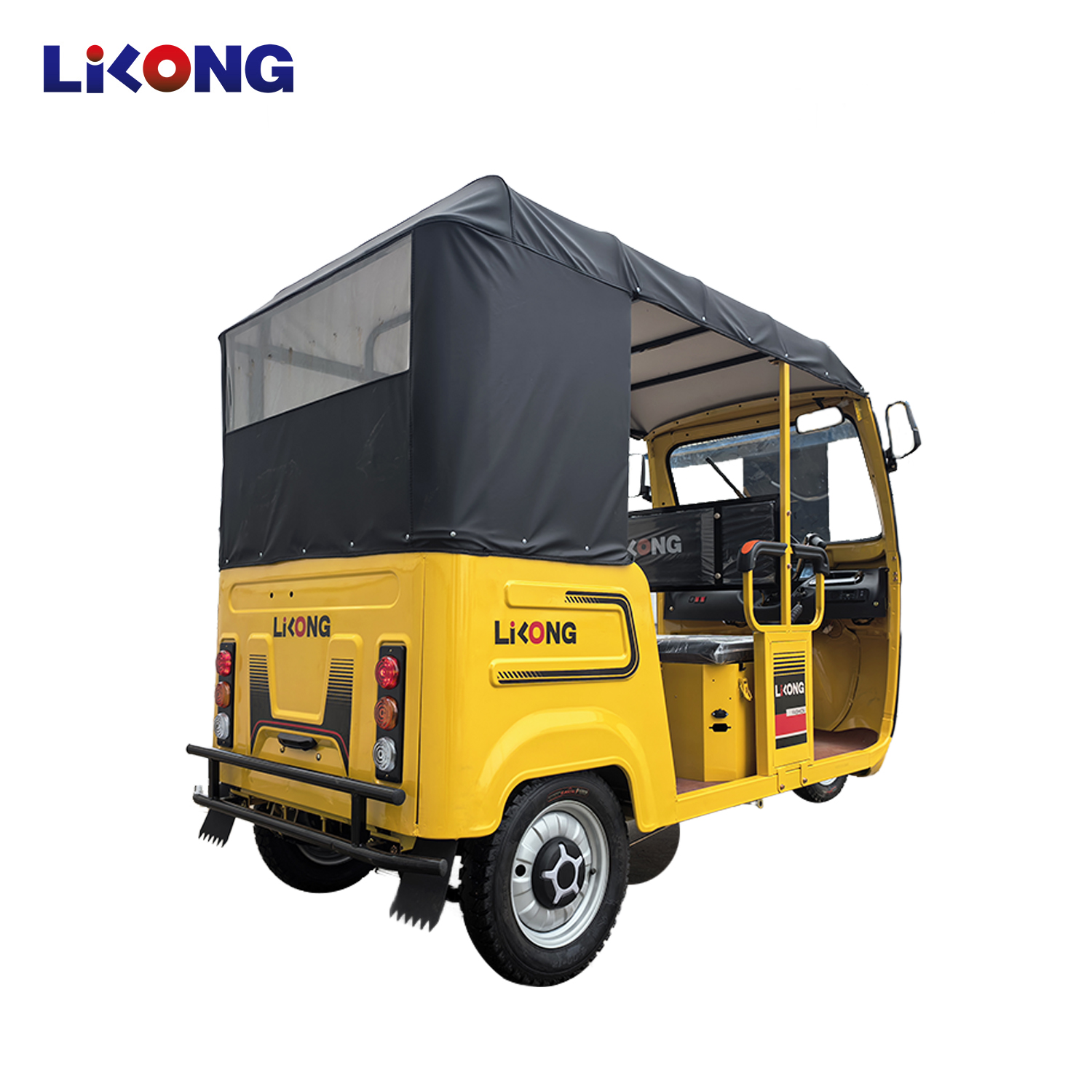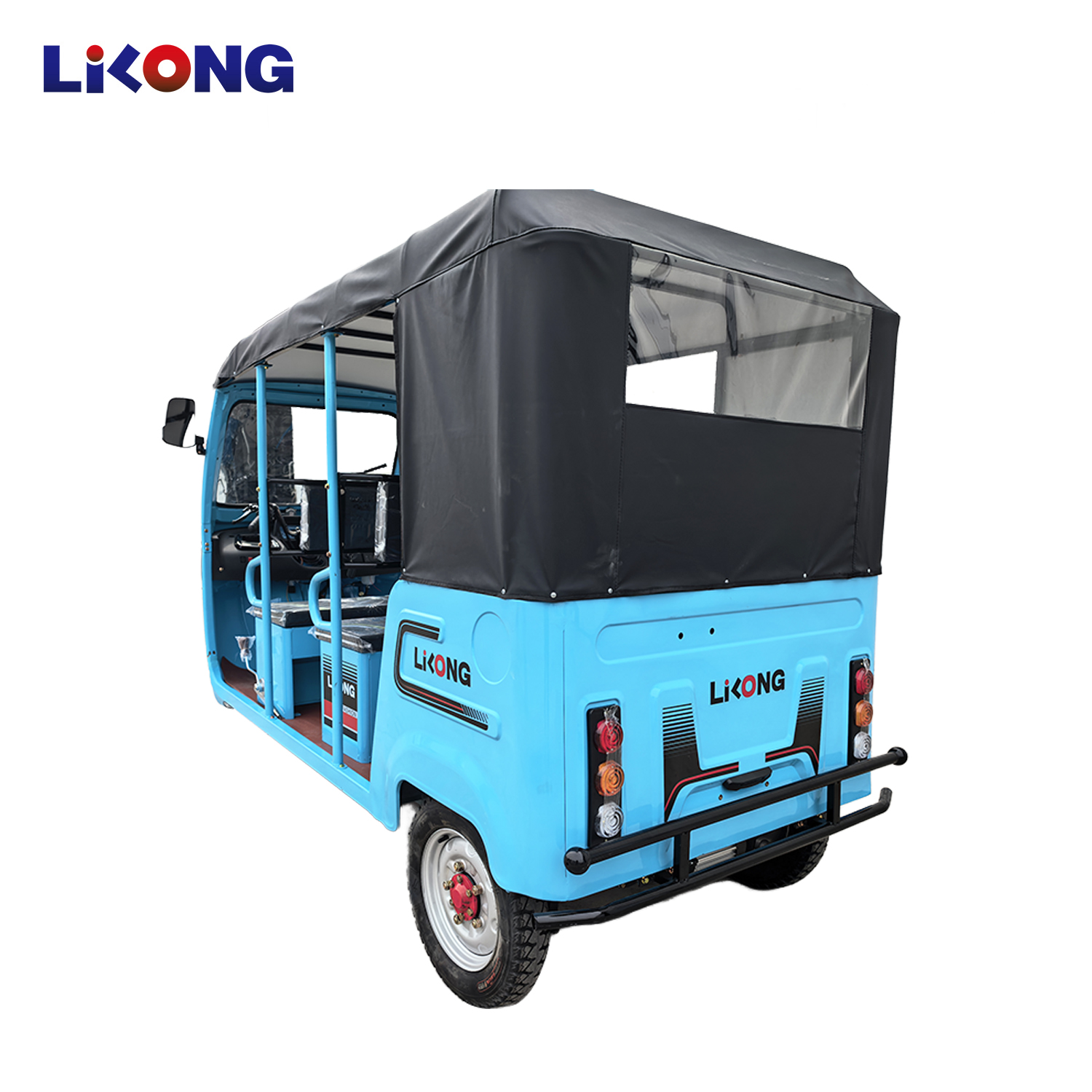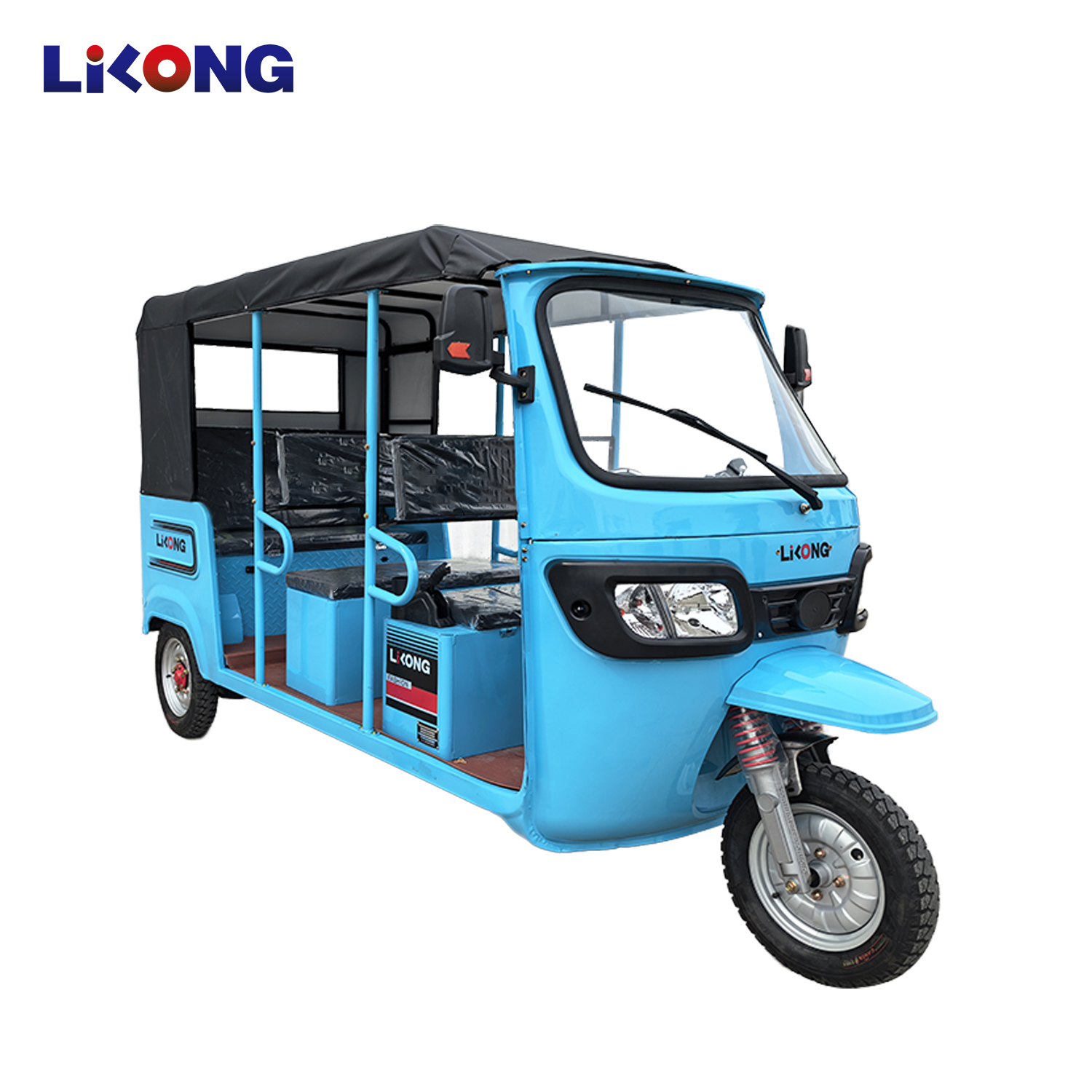
Are you curious about electric tuk-tuks? Maybe you've seen them zipping around in other countries, or perhaps you're considering one for your business. Whatever your interest, this seemingly simple question actually unlocks a world of fascinating details.

Electric tuk-tuks are three-wheeled vehicles powered by electric motors and batteries. They offer a sustainable, cost-effective alternative to traditional gasoline-powered tuk-tuks, producing zero emissions and reducing noise pollution. They are increasingly popular for short-distance travel, tourism, and cargo transport in many parts of the world.
Electric tuk-tuks are gaining a lot of attention, and for good reason. They represent a significant shift in how we think about short-distance transportation. But before you start picturing yourself driving one, let's dive deeper into the specifics.
What is a Tuk Tuk?
Ever felt frustrated by traffic jams and expensive fuel costs? Or maybe you’ve dreamed of a small, agile vehicle perfectly suited for navigating narrow streets. This is the core problem that the original tuk-tuk, and now the electric tuk-tuk, solves.
A tuk-tuk, also known as an auto-rickshaw, is a three-wheeled motorized vehicle commonly used as a taxi or for private transportation. It's essentially a motorized version of the traditional pulled or cycle rickshaw. They are characterized by their small size, open sides, and maneuverability.
Origins and Evolution
The tuk-tuk's story begins in the mid-20th century, evolving from earlier forms of rickshaws. The name "tuk-tuk" is onomatopoeic, derived from the sound of the older, two-stroke engines. Initially, these vehicles were primarily powered by gasoline or diesel.
Design Features
A typical tuk-tuk has a simple design:
· Three Wheels: One wheel in the front and two in the back, providing stability and maneuverability.
· Open-Air Cabin: Usually with a canvas or metal roof, offering partial protection from the elements.
· Driver's Seat: Located in the front, with handlebar steering.
· Passenger Seating: A bench seat in the back, accommodating two to three passengers.
Cultural Significance
Tuk-tuks are more than just vehicles; they are cultural icons in many countries. In places like Thailand, India, and the Philippines, they are a vibrant part of the urban landscape, often brightly decorated and reflecting the local culture. They represent an affordable and accessible mode of transportation for millions. Companies like Lilong Vehicle are working to modernize this icon, adapting it with electric power for the needs of the 21st century.
What are the Application Scenarios for Electric Tuk-Tuks?
Imagine a delivery vehicle that can navigate crowded city streets, or a tourist transport that’s both fun and eco-friendly. Sounds too good to be true? The limited range and carrying capacity of early electric vehicles presented real challenges.
Electric tuk-tuks are incredibly versatile. They are used for short-distance passenger transport (like taxis), cargo delivery, tourist excursions, and even as mobile food stalls. Their small size and zero emissions make them ideal for congested urban areas and eco-tourism initiatives.
Key Applications
Let's break down the main uses of electric tuk-tuks:
· Urban Passenger Transport: In many cities, especially in Asia and Africa, electric tuk-tuks are a common sight, weaving through traffic and providing affordable rides.
· Tourism: Resorts and tourist hotspots use electric tuk-tuks to offer unique and eco-friendly transportation experiences. Their open-air design allows tourists to enjoy the surroundings.
· Cargo Delivery: Businesses use electric tuk-tuks for last-mile delivery of goods. Their compact size allows them to navigate narrow streets and alleys where larger vehicles can't go.
· Mobile Businesses: Electric tuk-tuks can be customized into mobile food stalls, coffee carts, or even small retail shops.
· Rural Transportation: In areas with limited infrastructure, electric tuk-tuks, especially those with solar charging capabilities from companies like Lilong Vehicle, provide a reliable and sustainable transportation solution.
Emerging Trends
· Tuk-tuk Conversion Projects: In countries like Nigeria and Zambia, there's a growing trend of converting existing gasoline-powered tuk-tuks to electric. This reduces emissions and operating costs. Lilong Vehicle is at the forefront of this, supplying conversion kits and technical support.
· Government Partnerships: Governments, like Cuba's in partnership with the UNDP, are incorporating electric tuk-tuks into public transportation systems to promote sustainability and create jobs.
Are Tuk Tuks Safe?
Do you ever worry about the safety of open-air vehicles, especially in busy traffic? It's a natural concern, particularly when considering a mode of transport that might seem unfamiliar.
Tuk-tuk safety varies depending on the driver, local traffic conditions, and the vehicle's maintenance. While they lack the enclosed structure of a car, many modern electric tuk-tuks, like those from Lilong Vehicle, incorporate safety features such as seatbelts, sturdy frames, and improved braking systems.
Factors Influencing Safety
· Driver Skill and Behavior: Like any vehicle, the driver's experience and adherence to traffic rules are crucial for safety.
· Vehicle Maintenance: Regular maintenance, especially of brakes and tires, is essential.
· Traffic Conditions: Navigating heavy traffic requires extra caution.
· Road Infrastructure: Well-maintained roads contribute to safer journeys.
· Local Regulations: Compliance with local safety regulations and standards is vital.
Safety Features in Modern Electric Tuk-Tuks
Modern electric tuk-tuks, particularly those designed for export and meeting EU COC certification standards (like those manufactured by Lilong Vehicle), often include:
· Seatbelts: For both the driver and passengers.
· Reinforced Frames: Providing better protection in case of a collision.
· Improved Braking Systems: Such as disc brakes, for more effective stopping power.
· Headlights and Taillights: Ensuring visibility in low-light conditions.
· Turn Signals: Clearly indicating the driver's intentions to other road users.
Tips for Passengers
· Always wear a seatbelt if available.
· Hold on securely, especially during turns.
· Be aware of your surroundings.
· Choose reputable operators with well-maintained vehicles.
What is the Range of Electric Tuk Tuk?
Imagine planning a day of sightseeing or deliveries, only to be constantly worried about running out of power. This is the reality for many users of early-generation electric vehicles.
The range of an electric tuk-tuk typically varies between 80 and 180 kilometers (50 to 110 miles) on a single charge. This depends on factors like battery capacity, terrain, load, driving style, and weather conditions. Models with larger batteries or solar charging capabilities offer extended ranges.
Factors Affecting Range
· Battery Capacity: Measured in kilowatt-hours (kWh), a larger battery generally means a longer range.
· Terrain: Hilly terrain requires more energy, reducing range.
· Load: Carrying heavy passengers or cargo increases energy consumption.
· Driving Style: Aggressive acceleration and high speeds deplete the battery faster.
· Weather: Extreme temperatures (both hot and cold) can affect battery performance.
· Accessories: Using features like lights and heaters consumes additional energy.
Range Optimization Strategies
· Efficient Driving: Smooth acceleration and consistent speeds conserve energy.
· Proper Tire Inflation: Under-inflated tires increase rolling resistance.
· Regular Maintenance: Ensuring the battery and motor are in good condition.
· Load Management: Avoiding unnecessary weight.
· Solar Charging: Lilong Vehicle offers models with solar panels that supplement battery power, extending the range, particularly in sunny regions.
What is the Lifespan of a Tuk Tuk?
Are you wondering how long an investment in an electric tuk-tuk will last? It’s a valid concern, especially when comparing it to the lifespan of traditional vehicles you might be more familiar with.
The lifespan of a tuk-tuk, whether electric or gasoline-powered, typically ranges from 5 to 10 years with proper maintenance. However, the electric components, particularly the battery, may require replacement sooner, typically every 5-8 years depending on usage and care.
Factors Influencing Lifespan
· Build Quality: The quality of materials and construction significantly impacts longevity. Lilong Vehicle, for example, uses high-durability materials to ensure a longer lifespan for their electric tuk-tuks.
· Maintenance: Regular servicing, including lubrication, tire checks, and brake adjustments, is crucial.
· Usage Conditions: Operating in harsh environments (e.g., extreme heat, rough roads) can accelerate wear and tear.
· Driving Habits: Aggressive driving can put extra stress on components.
Lifespan of Key Components
· Chassis and Body: With proper care and rust prevention, the chassis and body can last for the entire lifespan of the vehicle.
· Electric Motor: Electric motors are generally very durable and can last for many years with minimal maintenance.
· Battery: This is the component with the shortest lifespan. Lithium-ion batteries, commonly used in electric tuk-tuks, typically last for 5-8 years or a certain number of charge cycles (e.g., 4000-6000 cycles).
· Tires: Lifespan depends on usage and road conditions.
Extending Lifespan
· Regular Maintenance: Follow the manufacturer's recommended service schedule.
· Proper Battery Care: Avoid fully discharging the battery and store it in a cool, dry place when not in use.
· Gentle Driving: Avoid harsh acceleration and braking.
· Protective Storage: Shield the tuk-tuk from the elements when possible.
What is the Top Speed of a Tuk Tuk?
Ever wondered if a tuk-tuk can keep up with city traffic? Or maybe you're curious about how fast they can go on an open road. Speed isn't everything, but it's definitely a practical consideration.
The top speed of most electric tuk-tuks ranges from 40 to 60 km/h (25 to 37 mph). This is generally sufficient for their intended use in urban areas and short-distance travel. Some higher-powered models may reach slightly higher speeds.
Factors Influencing Top Speed
· Motor Power: A more powerful motor generally allows for a higher top speed.
· Battery Capacity: A larger battery can provide more power for a longer duration, potentially increasing top speed.
· Vehicle Weight: A lighter vehicle will generally be faster.
· Aerodynamics: Although not a major factor for tuk-tuks, aerodynamic design can play a small role.
· Regulations: some country have regulations for the top speed of tuk tuk.
Speed vs. Practicality
While top speed is a consideration, it's important to remember that tuk-tuks are primarily designed for maneuverability and efficiency in urban environments, not for high-speed travel. Their lower top speed is often a deliberate design choice to enhance safety and fuel efficiency (or, in the case of electric tuk-tuks, battery life).
Speed Regulations
In many countries, there are regulations limiting the top speed of tuk-tuks for safety reasons. These regulations vary by location. Lilong Vehicle designs its electric tuk-tuks to comply with relevant speed regulations in the target export markets.
Why Aren't There Tuk Tuks in the US?
Have you ever noticed the absence of tuk-tuks on American streets, despite their popularity in other parts of the world? It might seem strange, considering the potential benefits they offer.
Tuk-tuks are not common in the US primarily due to stringent federal safety and emissions standards that most traditional tuk-tuks do not meet. The US market also favors larger, enclosed vehicles, and the existing infrastructure is designed for cars and trucks.
Regulatory Hurdles
· Federal Motor Vehicle Safety Standards (FMVSS): These standards, set by the National Highway Traffic Safety Administration (NHTSA), are very strict and cover aspects like crash protection, braking, and lighting. Most traditional tuk-tuks do not meet these requirements.
· Emissions Standards: The Environmental Protection Agency (EPA) sets emissions standards that are difficult for many older tuk-tuk engines to meet. Electric tuk-tuks, however, have a clear advantage in this area.
Market Preferences
· Vehicle Size: American consumers generally prefer larger vehicles with more enclosed space and safety features.
· Driving Habits: Americans often travel longer distances, making the limited range and speed of traditional tuk-tuks less practical.
· Infrastructure: US roads and parking spaces are designed for larger vehicles.
Potential for Electric Tuk-Tuks
Despite these challenges, there is a growing niche market for electric tuk-tuks in the US, particularly in:
· Tourist Areas: Resorts, theme parks, and tourist hotspots might use electric tuk-tuks for short-distance transportation.
· College Campuses: Their small size and maneuverability make them suitable for navigating campuses.
· Urban Delivery Services: For last-mile delivery in congested city centers.
· Gated communities: some gated communites use electric tuktuk for mail delivery.
Companies like Lilong Vehicle are actively working to meet US regulations, offering electric tuk-tuk models that comply with safety and emissions standards, paving the way for wider adoption.
Conclusion
Electric tuk-tuks offer a fascinating blend of tradition and innovation, providing a sustainable and versatile transportation solution. From their diverse applications to their evolving safety features, these vehicles are poised to play an increasingly important role in shaping the future of urban mobility, and manufacturers like Lilong Vehicle are leading the way.

 Beiguan Industrial Park,Feng County,
Beiguan Industrial Park,Feng County,
Xuzhou City,Jiangsu Province,China
 +86-631-6079990
+86-631-6079990
 sales01@lilong-autobike.cn
sales01@lilong-autobike.cn
